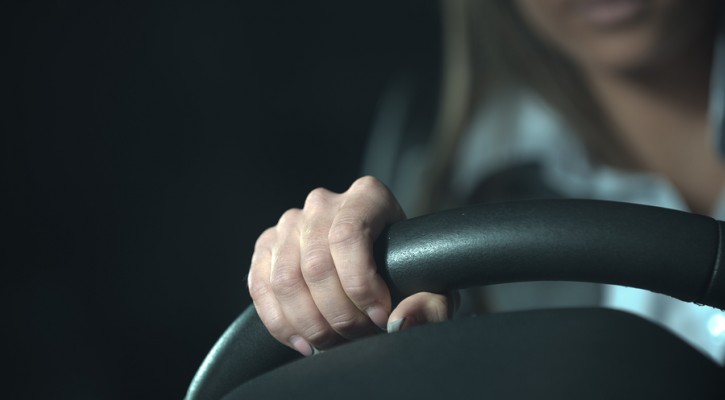Tag Archive: Teen driving safety

“5 to Drive” Rules To Keep Teen Drivers Safe
October 23, 2015
It’s Teen Driver Safety Week and this year’s theme is “5 to Drive”, referring to five things teen drivers need to be aware of when they drive. The five things are practices by teens that are the most common cause of teen crashes or that increase the chances of greater injury or death in a crash. The five rules that teens must obey if they want to live through a trip on the road are:
- No alcohol
- No cell phone use while driving
- No driving or riding without wearing a seat belt.
- No speeding.
- No extra passengers.
We’ve written about most of these before in a column on the most common type of teen crash. The only thing not covered in that column was the extent to which alcohol and other drugs contribute to teen crashes.
While alcohol use by teens has gone down significantly over the past few years, it still plays a big role in teen crashes. Of all the teen drivers (ages 15-20) killed in 2013, 29 percent had a BAC level of .01 or higher. Among those killed with measurable amounts of alcohol in their system, 82 percent had a BAC level of .08 or higher. More and more research studies show that other drugs along with alcohol are also showing up among drivers involved in crashes.
Cell phones, whether they’re being used for phone calls, texting, or social networking, present a significant danger to drivers of all ages but are especially dangerous for inexperienced teen drivers. Studies show that even hands free cell phone use is distracting.
Among young people aged 16-20 killed in crashes in 2013, more than half (55%) weren’t wearing seat belts. Fifty percent of the teen drivers killed in 2013 were unrestrained. Among teen drivers who survived a fatal crash, 85 percent were wearing seat belts. Studies show that teens who might otherwise wear a seat belt when driving themselves, don’t wear seat belts when riding as a passenger of another teen driver.
Speeding is responsible for approximately one-third of all fatal crashes in the US every year. For drivers under the age of 20 who were involved in fatal crashes, 35 percent of the males and 21 percent of the females were speeding. Speeding reduces the time a driver has to react to an emergency situation ahead and it increases the crash forces. Many teens learn, to their horror, that it’s impossible to keep a speeding car on the road in a curve.
Cell phones aren’t the only distraction for teen drivers. According to a 2012 study by the AAA Foundation For Traffic Safety, a teen driver’s risk of involvement in a deadly crash increases by 44 percent with one teen passenger in the vehicle. The risk doubles with two teen passengers and quadruples with three or more passengers. A teen driver is more likely to engage in risky behavior when one or more teen passengers are present.
Graduated driving laws were created to give teen drivers extra time to gain more driving experience by outlawing the five practices that contribute to so many teen crashes. However graduated driving laws for teens aren’t equal in all states. Parents should be aware of the laws in their state and, if their state’s graduated driving laws don’t go far enough to limit the distractions that teens face, parents can enact their own graduated driving license laws through the use of a teen driving contract.

IIHS Updates List Of Safest Used Cars For Teens
October 9, 2015
The Insurance Institute for Highway Safety (IIHS) has updated their list of the safest used cars for teens and, with manufacturers creating more and more safer vehicles, the list is 50 percent larger than last year’s list.
The IIHS found last year that teens were more likely to drive cars that were smaller, older, and less safe than vehicles driven by their parent’s generation. To guide parents and teens toward safer vehicles, the IIHS published their first list of safest used cars for teens last year.
The criteria for choosing the safest used cars hasn’t changed. Those criteria are:
- Stay away from high horsepower vehicles. Teens don’t need to be tempted to test the limits.
- Larger, heavier vehicles offer more protection in a crash. Small, light vehicles such as smart cars and mini-coopers weren’t considered for the list.
- Electronic Stability Control (ESC) is required. ESC prevents over-correction and helps keep the car on the road in curves and on slippery roads. ESC is now mandatory in all vehicles built since 2012.
- Vehicles should have the best safety rating possible. Vehicles should score “good” ratings in moderate overlap front crash tests, acceptable ratings in side tests and receive four or five stars from the National Highway Transportation Safety Administration (NHTSA).
The safest used cars list is broken into two categories;
- Best Choices – Safest used cars under $20,000
- Good Choices – Safest used cars under $10,000
The IIHS based their price estimates on Kelly Blue Book values as of September 1st of this year.
Read More: Safe and affordable: updated used vehicle recommendations for teens

Dramatic Evidence That GDL Laws Work
July 30, 2015
More and more evidence has been coming in over the past few years that GDL (Graduated Driving License) laws work to save lives among teen drivers. Now the State of Connecticut has produced evidence that their GDL law has dramatically reduced the teen death rate in that state.
A report released in May of this year by the Connecticut DMV Center for Teen Safe Driving, credited Connecticut’s strict GDL laws for the fact that, in 2014;
- “For the first time in 12 years, no 16- or 17- year-old passengers died in a crash of a vehicle driven by another 16- or 17- year-old driver in Connecticut.”
- “There was only one death among the 16- or 17- year-old drivers who were governed by the state’s GDL program.”
That’s an incredible accomplishment!
In addition, a report published in 2011 by the Connecticut Children’s Medical Center, stated that Connecticut’s GDL law can be credited with a significant decrease in fatalities among novice teen drivers. It also said that, among the fatal crashes that did occur, half were caused by teen drivers who were in violation of Connecticut’s GDL law.
Prior to 1997, the state didn’t require teens to have a learner’s permit or any specific training requirements before applying for an operator’s license. In 1997, the state passed a law requiring a learner’s permit along with home training for six months or a four month driver’s education program before applying for an operator’s license. However, evidence showed that the new requirements did little to reduce the death rate among teen drivers.
In 2003, the state passed the first GDL laws that set curfew and passenger restrictions for teen drivers. Those laws took effect in 2004. In 2008, after a series of high-profile teen crashes, the state beefed up their GDL laws even more by further strengthening the curfew and passenger restrictions, increasing the requirements for training, and increasing penalties, including the nation’s first 48 hour license suspension for teens charged with any traffic violation. The state also required a two-hour joint parent-teen information session for any 16 or 17 year old applying for a license.
The state vigorously enforced the GDL laws among teen drivers and, ten years after the enactment of the first GDL laws in 2004, the results show:
- A 64 percent reduction in the deaths of 16 and 17 year-old drivers who are governed by the state’s GDL program.
- A 13 percent decline in the number of crashes for the 16 and 17 year-old age group in 2013 compared to the previous two years.
- The Children’s Medical Center report says credits the state’s GDL laws – not maturity, for the dramatic reduction in the teen driver death rate.
The Insurance Institute for Highway Safety lists Connecticut among the top states for effective GDL laws based on the permit age of 16 and the zero teen passenger restrictions.
If other states were to follow this model, the teen driving death rate could be reduced dramatically nationwide. Regardless of what their particular state law says, parents can increase the safety factor for their own teen by setting and enforcing their own strict GDL limits.
Read more: Teen Driver, Passenger Fatalities at Historic Lows, According to New DMV Report Released Today

Stiff Penalties For Nighttime Driving Leads To Fewer Teen Crashes
June 18, 2015
Stiffer penalties for violating nighttime driving restrictions can lead to fewer crashes by teen drivers according to a study published in the June 2015 edition of Health Affairs.
Teens lead busy lives and, especially during the school year, tend to not get enough sleep. The tendency to drive drowsy combined with limited visibility and limited driving experience make nighttime driving especially hazardous for teens.
It has long been recognized that the teen crash rate increases at night and most states restrict nighttime driving by teens as part of their Graduated Driver License Laws (GDL). Under the GDL laws, teens are normally restricted from driving without a licensed adult present generally from 11:00 pm until 6:00 am, depending on the state where they are licensed. Depending on the state, those restrictions are generally lifted either after the first year or when the teen reaches the age of 18.
The State of Massachusetts limits nighttime driving by teens between the hours of 12:30 am and 5:30 am. Prior to 2007, violation of this restriction resulted in a $35 fine for a first offense and fines of $75 to $100 for second and subsequent offenses. In 2007, Massachusetts changed the penalties for nighttime driving by teens to a 60 day, 180 day, and one year license suspension depending on the number of previous offenses.
The researchers from Brigham and Women’s Hospital (BWH) compared the crash rate for 16 and 17 year olds to the crash rate for older teens in the one year period prior to enactment of the new law and then compared those rates to crash rates during the first five years after enactment of the law.
The results showed that the rate of crashes involving fatal and incapacitating injury among drivers age 16-17 fell by 40 percent. The overall rate of police reported crashes for teens in the 16-17 age group fell by 19 percent and the nighttime crash rate fell by 29 percent.
According to the senior study author at BWH, “Our data demonstrate that the 2007 revisions to the Massachusetts Junior Operator Law have prevented about 320 fatal and incapacitating injuries and 13,000 motor vehicle crashes among Massachusetts teen drivers over the past eight years.
Read more: Stiffened penalties for nighttime teen driving associated with fewer fatal crashes

Self-Driving Car Wish List For Teens And Parents
May 11, 2015
When it comes to a wish list for self-driving cars, teens and parents share some ideas but differ widely on others. This not too surprising fact is the result of a study conducted by the Carnegie Mellon University School of Engineering (CMUSE).
CMUSE surveyed 1,000 people aged 18 – 70 on what types of features they thought should be included in self-driving cars. Parents, overwhelmingly wanted features to control their teen’s driving. Among the features parents wanted to see included in self-driving cars for teens were:
Controls to set speed limit, curfew time and number of passengers.
Eighty-four percent of respondents, including a majority of the youngest drivers, said their self-driving car wish list would include these features. Among the strongest advocates for these features are:
- People ages 66 to 70 – 91%
- Women – 87%
- People ages 18 to 24 – 81%
Controls to limit speed and the number of passengers could save countless lives among teen drivers. Excessive speed and driver distraction are among the top causes of crashes among teen drivers. Passengers are especially dangerous because they create a distracting environment for teen drivers and teen drivers tend to show off and take greater chances by speeding when they have peers as passengers. With the car controlling the speed, the teen driver can blame his slow driving on the car and still save face.
One might wonder why a limit on passengers would be necessary in a self-driving car. Most self driving cars, at least in the beginning, would still require a driver to be alert and take over in the event of a systems failure or where the computer fails to recognize a hazard. The more passengers there are, the more distractions there are for the driver and the greater the chance for a crash.
Curfew times are another good idea. Teens tend to be sleep deprived and falling asleep at the wheel is an all too common occurrence. A car that could keep a teen driver from staying out too late could also save a lot of lives and parent’s frayed nerves.
Control feature to limit the geographic range the car will travel.
Not surprisingly, this is a feature that most parents – men (62%) and women (61%) – want but the idea isn’t too popular among younger drivers with barely half (54%) thinking this feature is a good idea.
Parent text display to communicate with driver
This is another one of those wish list features that showed a large generational divide with 69% of the youngest drivers thinking it a good idea while only 53% of people aged 56 to 65 favored it. Women favored the idea (63%) more than men (57%). However, texting in any fashion whether using a hand-held cell phone or a built-in display screen, isn’t a good idea because it takes the driver’s eyes off the road for too long.
The need for and effectiveness of these wish list features will depend on just how completely autonomous the self-driving cars will be and how secure and hack-proof the control systems are.
Read more: Teens Probably Won’t Like Self-Driving Cars, But Their Parents Will
